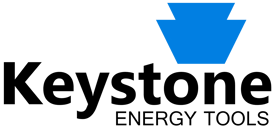We’ve already written a post about the BP oil spill and its aftereffects. That accident, which occurred during a normal operating procedure, highlights the very real and ever-present dangers inherent to oil rig operations.
Anyone working on an oil rig, from roustabouts to drillers, should be keenly aware of the dangers of their job — as well as the simple safety precautions that could help prevent an accident. Hundreds of major accidents occur on oil rigs each year, and though some never make it into the headlines, the roughnecks working on the rigs will never forget them.
We know the common risks well enough. At sea, anything from heavy storms to a light rain could be deadly under the wrong conditions. Even less ominous conditions, like too much humidity or too much sun, can lead to dangerous working conditions after a certain amount of time.
So how do you stay safe while working on a rig? Simple. You assess the risk factors, and you follow the rules. Here are 5 of the most important ones:
1. Protect the machines
It may seem counter-intuitive for rule #1 be about the protection of machines instead of humans.
But the truth of living and working on an oil rig hundreds of miles from the nearest trace of human civilization, one that can only be accessed and exited via helicopter, is that machines are your lifeline. Aside from your colleagues, machines are your best friends. If you treat them badly, they will treat you badly in return.
Machines are often very temperamental. Accidents and injuries that result from the improper handling or maintenance of energized or mechanical equipment can be reduced via proper training and regular checkups and maintenance.
2. Always use reliable lighting
Another thing about living at sea is that it’s often very dark – anytime a storm hits, anytime the sun goes down, anytime a light goes out inside. It can get dark quickly, and in an environment like an oil rig, where even the smallest feeling of claustrophobia can be exacerbated, darkness makes users more prone to accidents.
That’s why reliable lighting is so important, especially in low or confined areas. Installing easy-to-see, easy-to-use lighting with customized safety signage helps everyone do their jobs better and warns them of potential hazards.
4. Have enough repair and safety tool boxes everywhere
There’s no such thing as too many repair boxes, safety boxes, and first aid boxes around a rig. All industrial sites need them, but for obvious reasons, sea rigs need them most of all. Electrical parts, handling aids, plumbing, hand tools, power tools, welding gear — whatever is in short supply, get more of it. You’re working on a multibillion dollar platform, after all – requisitioning more than what you need is a smart thing to do.
5. Have an emergency response plan (and drill it into your heart)
Perhaps the most obvious and the most overlooked of these 5 safety procedures, a smart, strategic emergency response plan isn’t as simple as drawing one up and never practicing it. You should develop a plan based on the workflow on the rig, which will differ depending on the group, the rig, and even the weather.
There is no one-size-fits-all solution for rig safety. ERPs will vary depending on the weather conditions, the progress of a drilling operation, and the number of people on the rig at any given time. Develop plans accordingly.
About Keystone Energy Tools
Keystone Energy Tools is a manufacturer with over fifty years of combined experience in designing, manufacturing, and delivering high-quality oilfield tools, including elevators, slips, dies and inserts, tongs dies, safety clamps, stabbing guides, drill pipe float valves, baffle plates, float valve pullers, rotating mouseholes, and tong blocks.
By using the latest in 3D modeling for product design, implementing unique strategies, and by staying current with the rapid advances in manufacturing technology and quality-assurance standards, Keystone is able to manufacture and produce the most reliable products on the market today. Keystone offers a variety oil field tools services including: equipment re-certification, equipment repairs, load testing, and rotating mouse-holes remanufacturing. All Keystone Handling Tools are manufactured according to API 8C and API 7K Standards.





